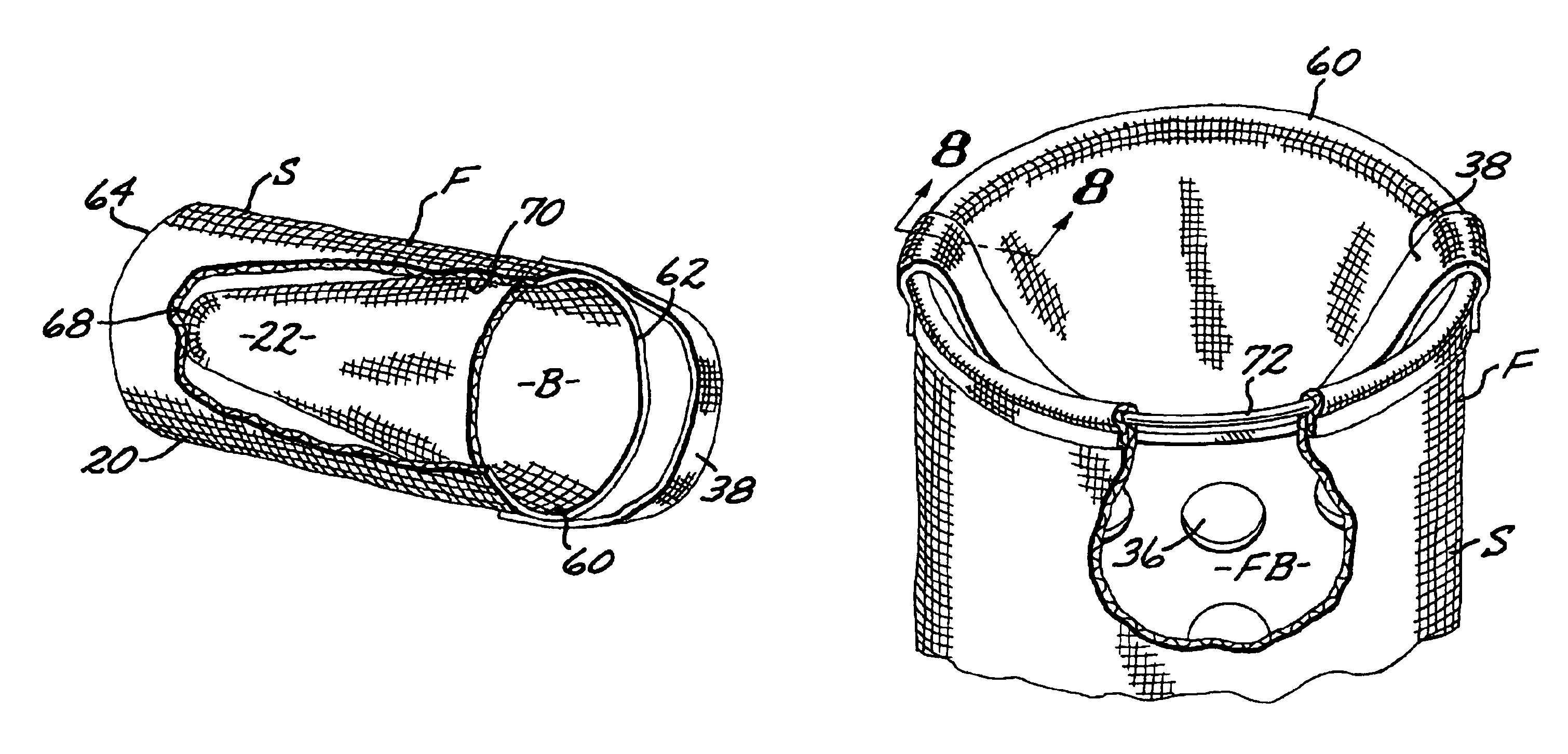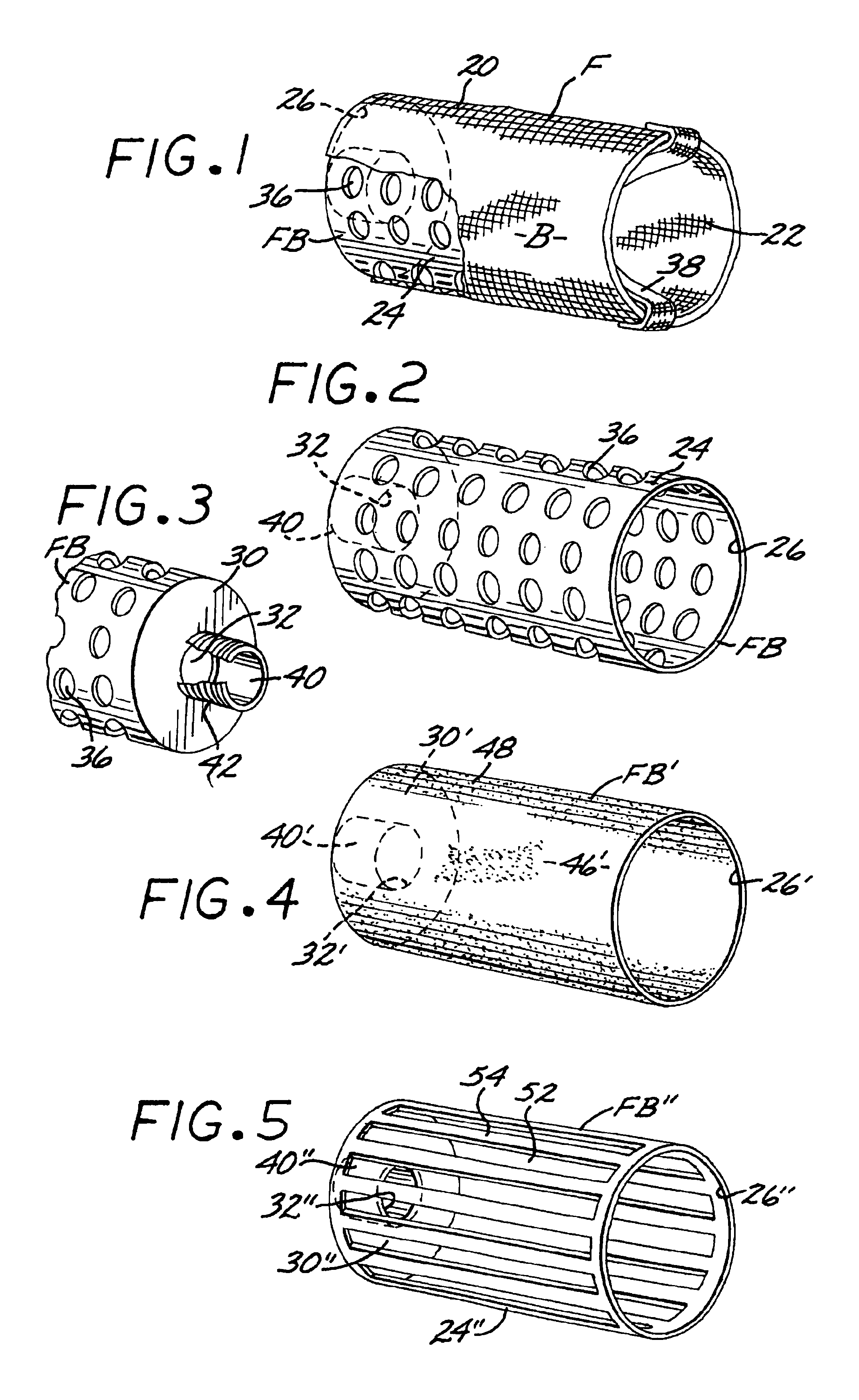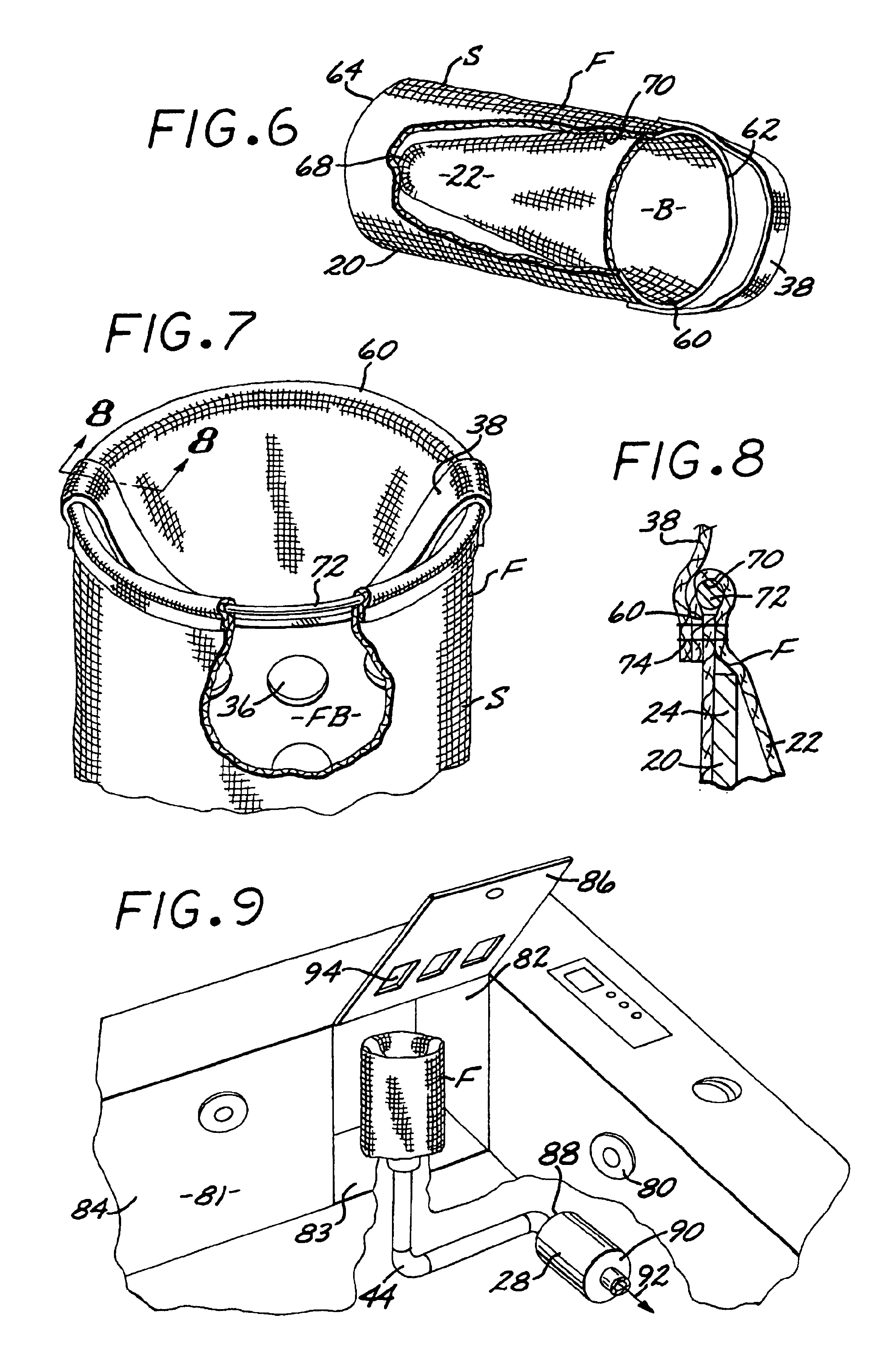Spa and pool filter
a filter and pool technology, applied in the field of filters for liquids, can solve the problems of affecting the performance of the pump, affecting the affecting the flow rate of the cartridge filter, and achieve the effects of enhancing both the performance and life of the pump, and reducing the cost of production
- Summary
- Abstract
- Description
- Claims
- Application Information
AI Technical Summary
Benefits of technology
Problems solved by technology
Method used
Image
Examples
Embodiment Construction
[0048]As shown in the drawings for purpose of illustration, an internal spa filter of the present invention utilizes a filter bag removably disposed upon a cylindrical filter body and configured to be installed within a spa's circulation system in order to filter particles and debris out of the spa water. While the spa filter embodying the present invention is described and depicted as being used in a conventional spa, it will be appreciated that the invention can also be used in conjunction with above- and below-ground swimming pools, hot tubs, Jacuzzis, or with any other system involving recirculated water that is to be filtered.
[0049]More particularly, referring to FIG. 1, a preferred embodiment of an internal spa filter F of the present invention includes a cylindrical filter body FB and a filter bag B having a cylindrical sheath 20 and a pocket 22 that extends concentrically inwardly from the inlet end of the sheath. The upper end of the cylinder 24 of the filter body is open t...
PUM
| Property | Measurement | Unit |
|---|---|---|
| weight | aaaaa | aaaaa |
| pore size | aaaaa | aaaaa |
| surface area | aaaaa | aaaaa |
Abstract
Description
Claims
Application Information
 Login to View More
Login to View More - R&D
- Intellectual Property
- Life Sciences
- Materials
- Tech Scout
- Unparalleled Data Quality
- Higher Quality Content
- 60% Fewer Hallucinations
Browse by: Latest US Patents, China's latest patents, Technical Efficacy Thesaurus, Application Domain, Technology Topic, Popular Technical Reports.
© 2025 PatSnap. All rights reserved.Legal|Privacy policy|Modern Slavery Act Transparency Statement|Sitemap|About US| Contact US: help@patsnap.com



